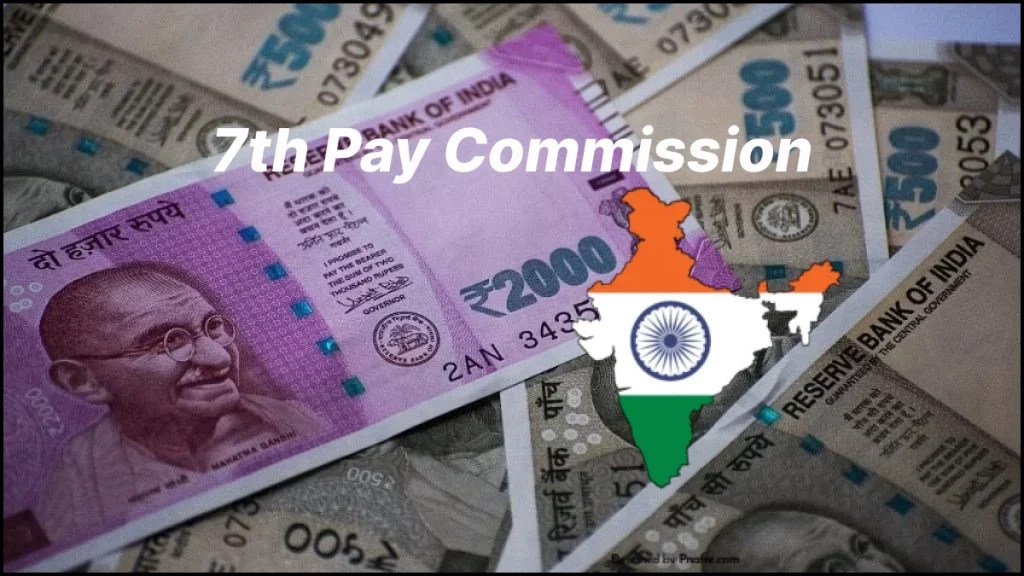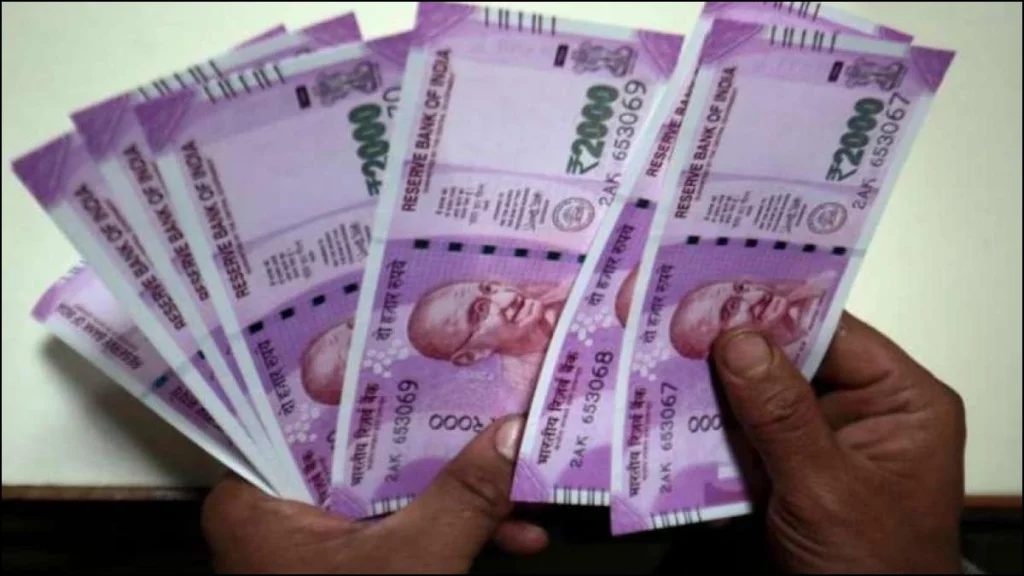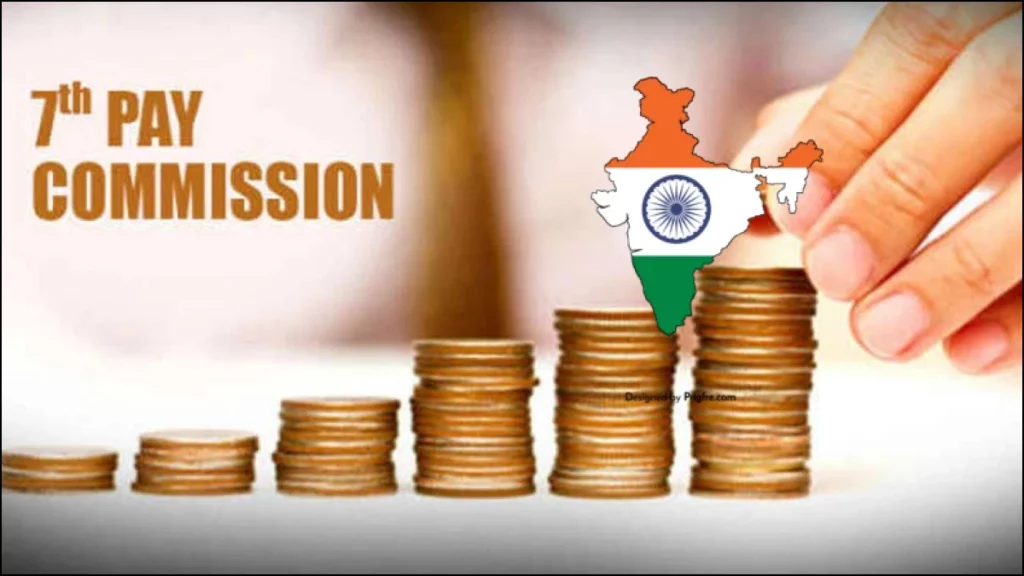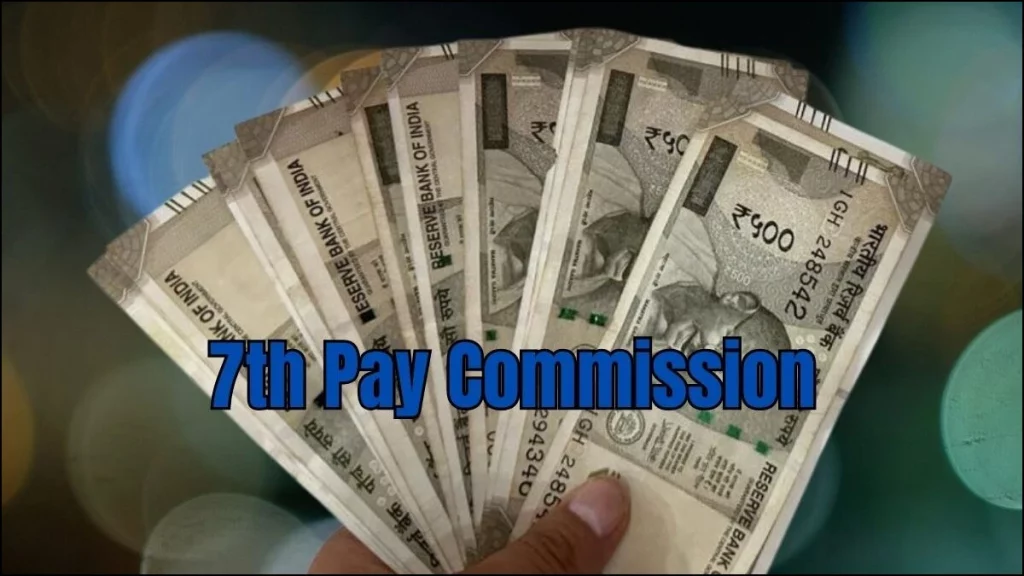7th pay commission of India has been catering a lot of attention these days due to its new recommendations and revised salary structure for government employees in India.
One of the great initiatives by the government for its employees well being and work structure, however, the knowledge and details about the 7th pay commission of India is not known by many!

The decision and recommendations taken by the Pay commission of India impacts and carries a lot of importance in the lives of government employees. Therefore, having a better understanding of this topic is important for all of us!
(A) What is the Pay Commission of India?
The Pay Commission of India, which was set up in 1947, is an administrative system governed under the Government of India.
The pay commission of India was set up with the goal to provide recommendations for the changes or reviewing the existing salary structures and in other facilities provided for civil and government employees of India.

To analyze, reviewing and recommending changes in the salary and work structure, Pay Commission of India looks into various factors of the economy, like:
- Economic conditions of the country.
- Cost of living in the country.
- Inflation.
- Financial resources under the government.
- Prevailing market rates.
- Revenue of the state government, etc.
Pay Commission of India takes around 18 months of time for submitting its report of recommendations and is conducted every 10 years. Recommendations and changes suggested by the Pay Commission of India are not mandatory to be accepted by the government of India.
The Pay Commission of India is responsible for making changes or revised salaries of all government employees, making adjustments to the salary structure, keeping the factors in mind.
Till now seventh pay commissions are done, starting from 1947, when first pay commission was conducted.
(B) Previous Pay Commissions In India
Before having a detailed conversation on 7th Pay Commission of India, there we’ll have a discussion about the previous pay commissions held in India.
| Pay Commission | Description |
| First Pay Commission | The first pay commission was set up in 1946 and submitted its report in 1947. |
| It was chaired by “Shri Srinivasa Varadacharia” and was based on the idea of “living wages” to the employees. | |
| Rs. 55 was fixed as the minimum wage which breaks down to Rs. 30 + Rs.20 as Dearness Allowance (DA). | |
| Second Pay Commission | Set up in August 1957 and submitted its report in 1959 (after two years). |
| Was chaired by “Shri Jaganath Das”, and the pay scales Pay scales revised by merging were changed and revised by merging 50% of the Dearness Allowance with basic Pay. | |
| It recommended Rs.80 as the change which breaks down to basic pay of Rs.70 and dearness allowance of Rs.10. | |
| Third Pay Commission | The commission was set up in 1970 and submitted its report in 1973. |
| The commission was chaired by “Shri Raghubir Dayal” and minimum remuneration of Rs.185 was recommended. | |
| But later on, the amount was changed to Rs.196 per month from Rs.185. | |
| Fourth Pay Commission | The commission was set up in 1983 and submitted its report in 1887 (after four years). |
| The commission was chaired by “Shri P.N. Singhal”. | |
| Recommended government to implement a permanent criteria for undertaking the periodical review of pay and allowances of central government. | |
| Fifth Pay Commission | The commission was set up in 1994 and submitted its report in 1997. |
| The commission was chaired by Justice “S Ratnavel Pandian”. | |
| The commission recommended reduction in the number of pay scales and increased the minimum amount from Rs.750 to Rs.2550. | |
| Sixth Pay Commission | The commission was set up in July 2006 and submitted its report in March 2008. |
| The commission was chaired by Justice “B N Srikrishna” and recommended removing stagnation and running bands were introduced by the commission. | |
| The commission recommended the minimum salary at the entry level pay band to be fixed at Rs.7000, and max salary at the level of secretariat/equivalent was fixed at Rs. 80,000. |
As we discussed above the sixth pay commissions held in India earlier in brief, let’s move to another major part of the discussion which is all the details about 7th Pay Commission Of India!
(C) What Is 7th Pay Commission Of India?
The pay commission for which all the government employees were eagerly waiting, as it will determine how much salary hike and other benefits they’ll be getting.
The 7th Pay Commission of India, was set up on February 28th 2014 and submitted its report on November 19th, 2015.

The 7th Pay Commission of India was implemented from January 1st 2016.
The commission was chaired by Justice Ashok Kumar Mathur, while other prominent members included in the 7th pay commission of India are Shri Vivek Rane (IAS), Smt Meena Agarwal (administrative expert) as Secretary, and Dr Rathin Roy (economist, Director NIPFP).
The basic core objective of 7th pay commission of India was to revise and recommend changes in the salary structure and ensure maximum employee benefit and protect the rights of an employee, working for the government of India, which includes both civil and military personnels.
The 7th pay commission of India introduced 7the pay matrix, which is a chart that helps in organizing and classifying government employees.
(D) Key Features Of 7th Pay Commission Of India
The 7th pay commission of India has placed following recommendations in the table.
| Recommendation | Description |
| Minimum Pay Scale | This recommended minimum pay scale for all government employees. The minimum pay entry level should be Rs.18,000 per month. Minimum pay for newly recruited class I officer should be Rs.56,100 per month. |
| Maximum Pay Scale | The increase was recommended to Rs.2.5 Lakhs for top position employees like Cabinet Secretary and Equivalent. |
| Annual Increment | According to the 7th pay matrix scale, the rate of annual increment remains unchanged at 3%. |
| Dearness Allowance | A relief for the government employees. The Dearness Allowance got a hike of 2%. This will benefit more than 50 lakh Central Government employees and around 55 lakh pensioners and staffers. |
| Military Service Pay (MSP) | Earlier it MSP, was payable to all ranks upto and was inclusive of Brigadiers and their equivalents. But now will be addressed only to Defense forces personnel. MSP is a compensation for military service and it is recommended to enhance MSP for various categories. |
| New Structure | As with the 7th pay commission a new pay matrix has been introduced. Therefore the change and status will be determined by their level in the new pay matrix. |
| Fitment Factor | A fitment factor of 2.57 is being recommended to apply uniformly to the existing pay of all the employees. |
| Medical Facility | The commission introduced a new health insurance scheme for central government employees and pensioners. Which covers postal pensioners under CGHS and merging of postal dispensaries with CGHS. |
| Gratuity Limit | The gratuity limit has been enhanced to Rs.20 lakhs from Rs.10 lakhs and the Dearness Allowance has been raised by 50%. |
| Pension Revisions | The pension has been revised for all civil employees, that includes Central Armed Police Forces (CAPF) personnel and defense personnel who retired before January 1, 2016. |
| Advance | The non-interest & other interest bearing advances are removed and personal computer advance and House Building Advance (HBA) are still there and eligible, and HBA is revised to Rs 25 lakhs from Rs 7.5 lakhs. |
| Pay based on Performance | The new Performance Related Pay (PRP) was introduced, under which it will include the existing bonus for all categories of Central Government Employees. |
| Modified Assured Career Progression (MACP) | It recommended that no annual increment is given to employees who do not benchmark either for MACP or for a regular promotion in the first 20 years of their service. |
(E) Latest Updates of 7th Pay Commission of India
- The final report of recommendations and changes will be submitted to the Finance Ministry and will go through various rounds before it is implemented by the government.
- The government employees of all sectors are waiting for their salaries to rise from July 2022.
- The central government can increase the dearness allowance, and the government may increase their salaries by about 15-20%.
According to the senior official from the finance ministry, it can increase twice in the year, that may be from January 1st and April 1st.
(F) Summing Up: 7th Pay Commission of India
The 7th Pay Commission implemented by the government is a major move in securing and looking after its employees salary structure as well as other features.
7th Pay commission emerged as a key player shaping a good landscape for its servants in India.

The pay commission of India incorporates various factors like the economy of the country, financial resources, cost of living, etc. before submitting their recommendations and suggesting changes for the work and salary structure of all government employees.
Note: Want to know how India is planning to become Atmanirbhar by cutting edible oil imports? To know about it in detail, visit our article, “How India is planning to cut off edible oil imports and become Atmanirbhar?”

This commission is really a safeguard sheild for all the government employees for securing their salary and other features structure.